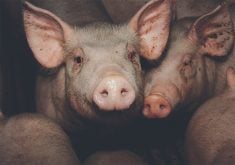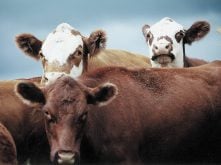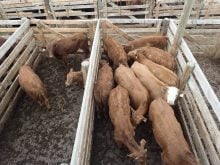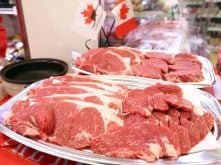Bison, like cattle, get mineral deficiencies if they do not receive supplements.
An absolute deficiency may take two or more years to develop, but skimping on minerals and vitamin supplementation can lead to poor growth and disease and parasite problems.
Minerals are necessary for bone and muscle growth, reproduction and immune and enzyme function.
Specific minerals are formulated for bison, but in many cases cattle minerals come close to meeting all a bison’s needs.
If there is a need to check a specific mineral status, it is best to do so on liver samples at post-mortem or slaughter. This is much more accurate than sampling blood.
Read Also
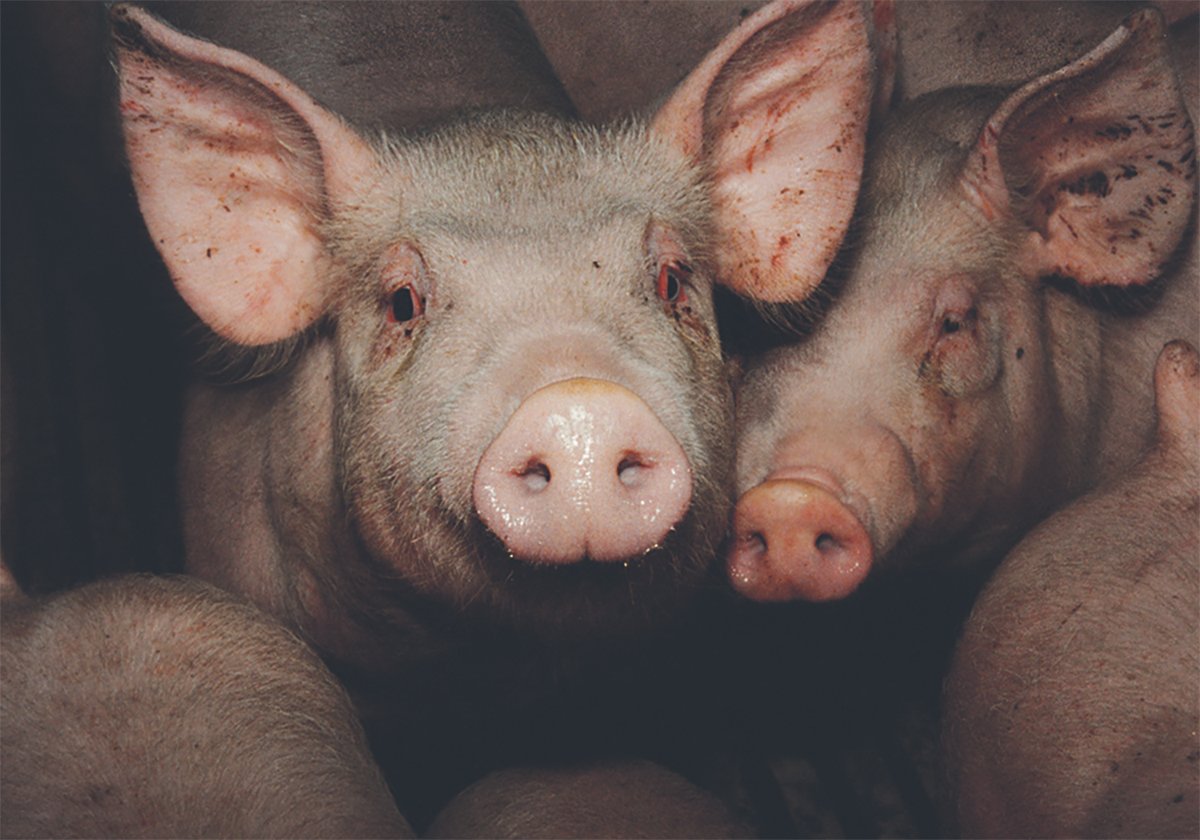
The Western Producer Livestock Report – October 30, 2025
Western Producer Livestock Report for October 30, 2025. See U.S. & Canadian hog prices, Canadian bison & lamb market data and sales insights.
Mineral deficiencies are seen in 75 to 95 percent of the feed grown in Alberta and probably Western Canada.
Nutritionists assume there are no minerals in the feed when they balance the ration. What is in the feed acts as a conservative cushion against deficiencies developing.
Mineral deficiencies first slow growth and then hurt reproductive rates.
Deficiencies are slow to develop, and correcting them is also slow. There is no magic shot to give. Instead, proper supplementation over time is the answer. The cost of minerals is a small price to pay for maintaining a healthy herd.
The first thing to calculate is how much minerals your bison should be consuming. If the recommended rate is 40 grams daily, then a 25 kilogram bag of minerals contains the equivalent of 625 bison days.
You could also see it as 30 head of mature bison going through a bag every three weeks or so. This is probably rarely the case. The important point is they are consuming at least some minerals.
If the consumption is really low, top dress it in feed whenever possible. Giving twice the daily requirements every two days in feed has worked well in cattle, but bison should be consuming some minerals every two to three days if possible.
Minerals in feeders can work, but the feeders must be solid or they will either be tipped over or broken.
Bison grow slower than cattle, so we probably have overestimated the requirements somewhat. However, young weaned calves and pregnant cows are the two most critical groups.
Bison at pasture are indiscriminate grazers, and this variety of feed helps provide natural sources of minerals.
I have seen several types of deficiencies over the years, and in almost every case minerals had been non-existent for several years.
Iodine deficiencies lead to goitre, which causes stillborn or weak calves at birth and an enlarged thyroid gland. The thyroid gland is visibly swollen in the throat, which makes diagnosis easy.
Iodine is available in the blue or red salt, and in my experience bison happily lick salt blocks.
Standard minerals are 40 to 50 percent salt, which acts as an attraction so the minerals are consumed when the animal actually is craving salt.
Copper deficiency can develop in two ways:
- an actual deficiency
- as a result of excess sulphates or molybdenum in the diet, which will compete with the copper
Well water can carry a high level of sulfates, so it is a good idea to periodically check the water supply.
Copper deficiency leads to poor growth and bleached hair coats, often with diarrhea and swollen bones around the joints. These swollen joints are the result of enlargements on the growth plates where the long bones grow.
Selenium is deficient across most of Western Canada and deficiencies can show up, especially at handling when bison run excessively, resulting in down animals as the muscles are damaged.
The condition is called capture myopathy, and it is similar to white muscle disease in beef calves. Both conditions are greatly minimized if selenium is present in the minerals. Minerals will always identify the level of selenium.
Many types of deficiencies exist, and one must rely on nutritionists to balance the package in commercially prepared minerals. Formulas are developed to meet the needs of the region, so rely on your local veterinarian, feed mill or agriculturist to determine the best formulation for your area.
But remember, any minerals are better than no minerals.


